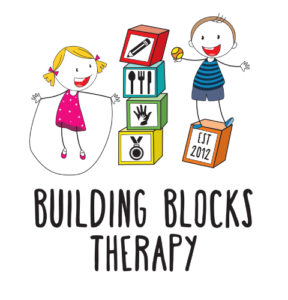Now that we will be inside for a week, it is time to pull up a chair, pour a hot chocolate or a cup of tea, and grab a pencil and paper to play these games that target a whole variety of skills! These activities vary in difficulty, and there is something here for all ages.
Wacky Characters
How many players: 2-3
Skills targeted: Flexible thinking, turn taking, fine motor skill, idea generation
How to play:
Begin by folding your page into thirds, and marking a ‘neck’ and ‘waist’. Label if you need.

Each player completes a section of this picture, without looking at other components. When each player finishes, they fold away their section and open up the space for the next player. If playing with only 2 people, someone can go twice. Remind players to look at the marked neck and waist to see where to start from to make sure pieces connect.

Once all three parts are connected, open the picture to reveal your creation!

What to encourage:
- Using a variety of colours
- Appropriate pencil grip
- Thinking outside the box, what could we do differently? E.g. wheels for feet.
- Letting everyone have a turn and think of their own ideas
Extension:
Think of a name for your character. Write a profile about them, what do they like? What do they eat? Where are they from?
Dots and Dashes
How many players: Works best with 2, but you could do up to 4 with a big grid!
Skills Targeted: Turn taking, fine motor skill, problem solving, practicing reacting to winning or losing points as a good sport.
How to play:
Start by drawing a grid of dots, at least 4 x 4. The bigger the grid, the longer the game!

Players take turns using a line to connect two dots. One line, then the next player’s turn. It can be helpful for each player to use a different coloured pencil.

If a player completes a box on their turn, they put their initial in it, and get an extra turn to make a line. This may repeat several times, a player may win several boxes in one turn. In the example below, blue completed the box, so they have included their initial, and made an extra blue line. It is now green’s turn.
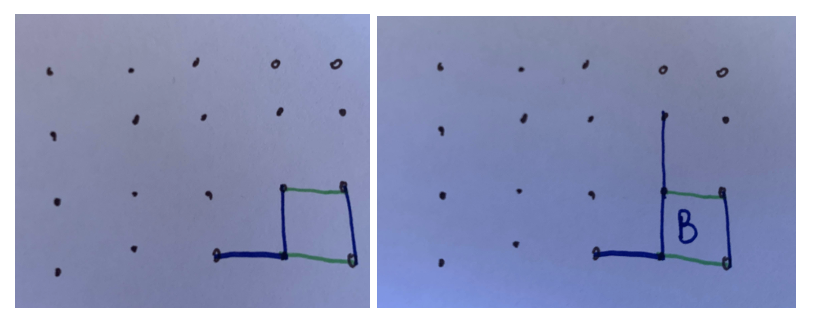
Once the board is complete and no more lines can be drawn, count the number of boxes each player has. The most boxes wins!

What to encourage:
- Using kind words with other players
- Thinking about what the other player might do based on our move
- Letter formation
- Thinking about how other players feel when they win/don’t win
Sprouts
How many players: Between 2 and 6 works best
Skills Targeted:Fine motor skill, pencil skill
How to play:
Start by drawing as many dots as there are players, plus one more (e.g. 3 players = 4 dots, 5 players = 6 dots). The dots can be anywhere on the page!

Each player chooses a colour. On their turn, they can draw a line in their colour. Their line can either:
- Connect 2 dots to each other
- Connect 1 dot to itself
However, the dots can only have 3 lines coming off them at any point.
E.g. Adding a loop here is allowed:

But not here because there would be 4 lines:

Once the player has added their line, they place a dot anywhere on the line they like. Then the next player makes a move following the same rules.
Lines may never cross each other.
At some point, it will become impossible to add a line following the rules. The last player that drew a line wins!
Example game:








In this example, blue made the last possible move so they win! No other lines can be made as every dot except 1 is full (3 lines), except for one. The player cannot make a loop touching that one as it already has 2 lines.
What to encourage:
- Drawing lines without lifting the pen
- Planning path before drawing it
- Squeezing through small spaces
Adjustments:
Players might find it helpful to put a cross through dots once they are full, to make it easier to see where is possible.
Pass the picture
How many players: As many as you like! Best with 4+ players
Skills Targeted: Pencil control, visual motor integration, critical thinking, handwriting
How to play:
Begin with as many squares of paper as there are players. Each player gets a piece of paper.
The first player draws a picture. The more complicated the picture, the trickier the challenge will be! They pass it to the next player.
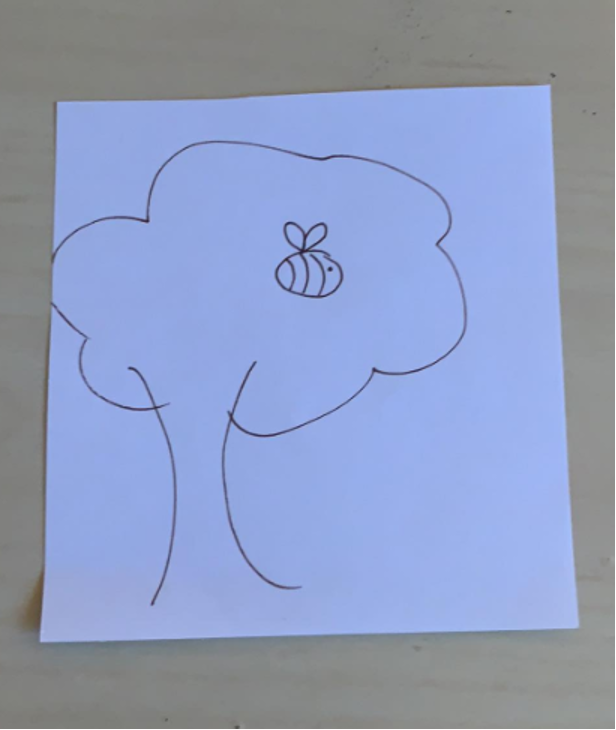
The next player writes down what they think was drawn, and places their square over the previous. They pass it on.

The next player draws what is written on the square they see. They place their picture over the writing.
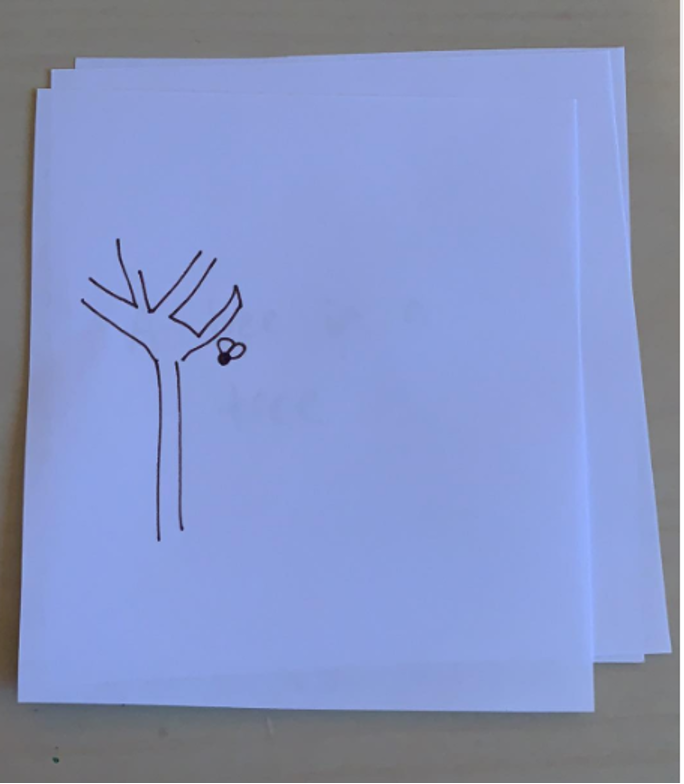
Play continues until we reach the last person. Then we compare the first picture, with the final piece of writing or picture, to see how close the message is!
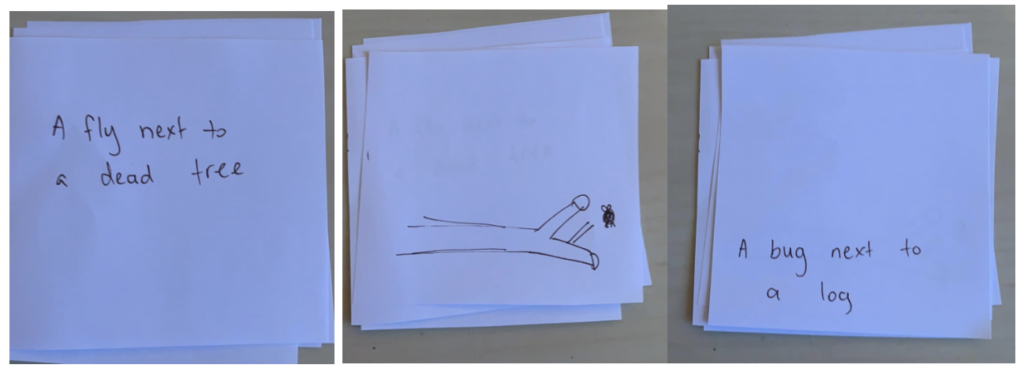
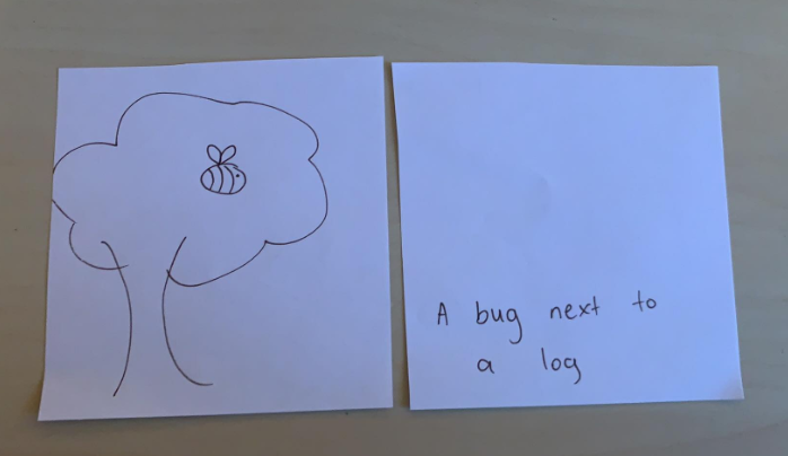
What to encourage:
- This game can be used to practice flexible thinking! First play it trying to make the pictures and words as close as possible. Then play it trying to branch out as much as possible, trying to make the end result as far from the original as possible!
Adjustments:
If players find this challenging, using coloured pencils can make it a little easier.
It may be helpful to draw lines for players who are writing.
If you and your child are looking for a really challenging pencil and paper game, this is a detailed explanation of pencil and paper battleships, fantastic for a critical thinking and spatial thinking challenge! http://www.papg.com/show?1TMC
